
| Choquequirao to Machu Picchu Trek (part 2) |
Day 4 - Rio Blanco to Minas Victoria (8km - 2040m ascent - 20m descent) |
|
|
|
|
|
|
||
|
|||
The landscape was starting to get a mysterious air as we pushed on into the clouds that had formed above, with gaps opening up occasionally to reveal the valley below or the snow-capped peaks on high. |
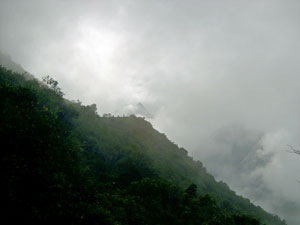 Mists streaming up the densely vegetated slopes ..... |
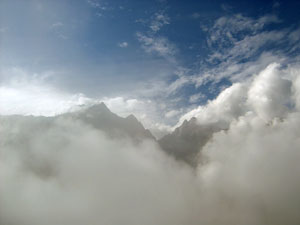 ... to form clouds around the mountain peaks |
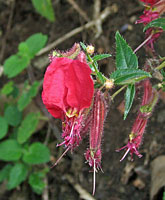 |
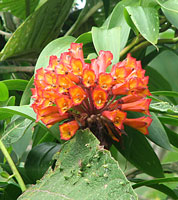 |
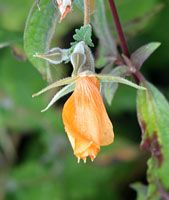 |
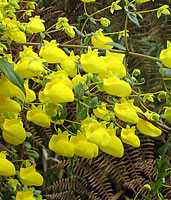 |
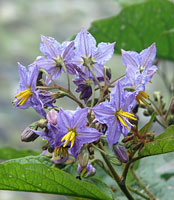 |
|
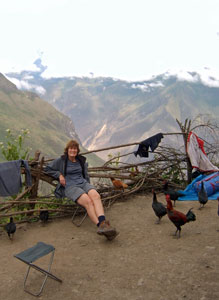 A group of old chooks at our lunch spot |
||
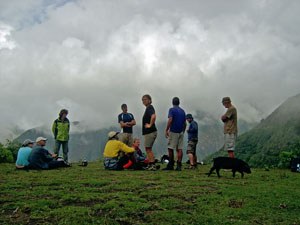 The World Expedition group take at break at Maizal |
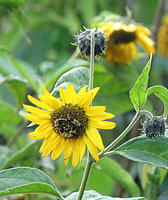 Wild sunflower |
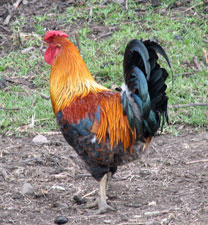 Roger the rooster (for Jules) |
|
|
||||
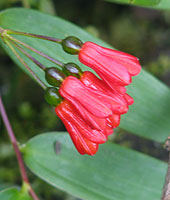 |
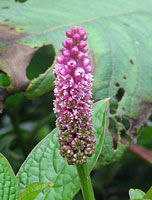 |
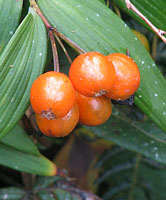 |
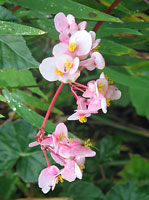 |
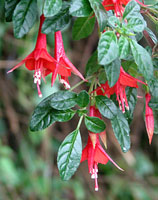 |
|
||||
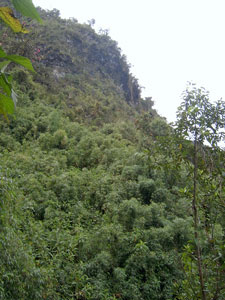 The intense green of the cloud forest |
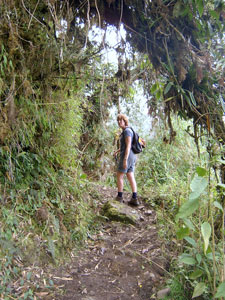 Path through bamboo and vine thickets |
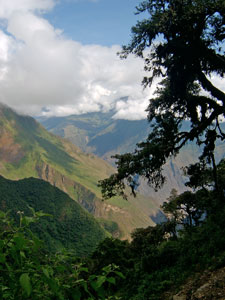 View through a gap in the cloud forest |
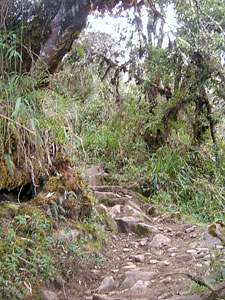 Track beneath the cloud forest canopy |
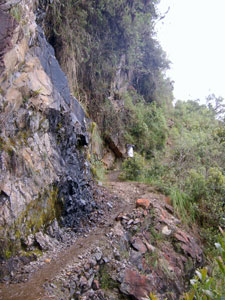 Path around the cliff base in the cloud forest |
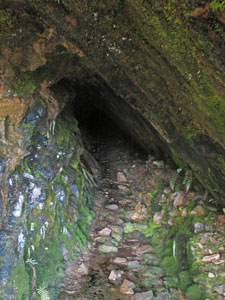 Moss-lined cave in the cliff |
The path dipped a little to meander along beneath an impressive black-walled cliff, passing a couple of small caves before finally finding what it was looking for - a cleft in the cliff face that led to the next level. A series of steep short zig-zags took us up through the dark shade of the cloud forest, when suddenly the trees disappeared beneath us 1800m into the climb. |
|

|
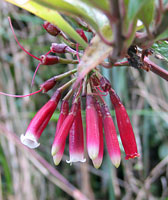 |
||
|
|
|
We had passed into the puna, where tussock grass and a scattering of bushes dominated the landscape. Above, the glacier-capped peak of 5700m Cerro Victoria appeared briefly through the clouds. A short time later we reached our destination, a grassy flat at 3900m that was the site of an old silver mine, looking out over the expanse of steep green slopes and distant canyons. It was time to set up camp and, as we had climbed over 2000m in a single day, a little self-congratulations seemed in order (and our congratulations to the WE trekkers as well, sitting in their dining tent on the shelf just below us). We sat on the soft grass tussocks watching the mist and cloud form beautiful images with the jagged spur of Cerro Victoria and at times we were even looking at the clouds from above as they swirled across the void beneath. |
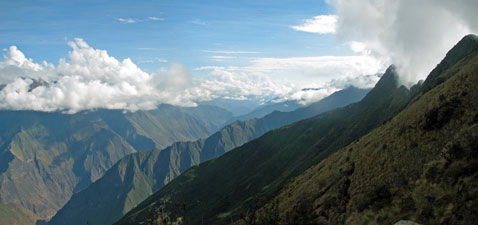 View back over our track toward the Apurimac Canyon |
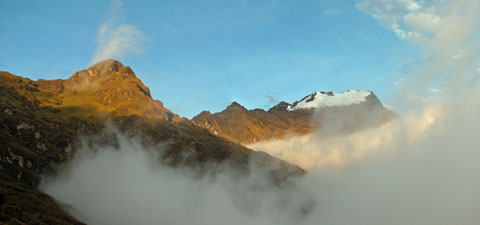 Cloud swirling about the heights of Cerro Victoria |
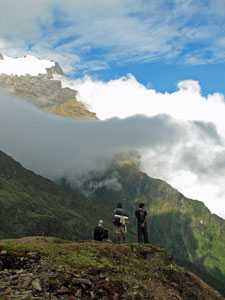 Sons of the Inca in their mountain domain |
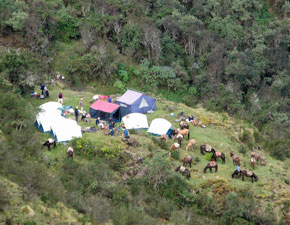 Peering down on the WE campsite from our lofty perch ..... |
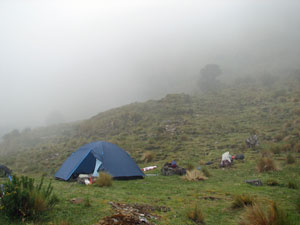 .... which eventually was engulfed in fog |
|
||
|
Day 5 - Minas Victoria to Tayaco (12 km - 600m ascent - 550m descent) |
||
|
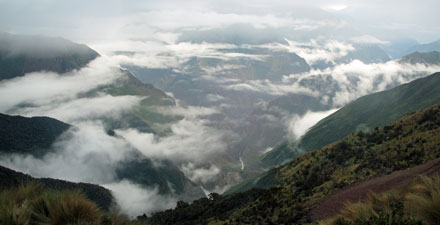 Early morning mists drifting in the valley below Minas Victoria |
|
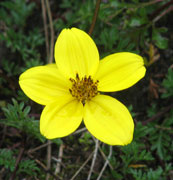 |
 |
|
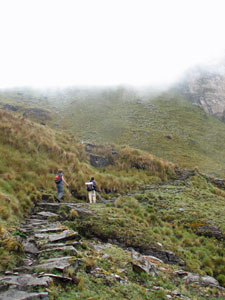 Last stage of the climb up to San Juan Pass |
After a climb of 250m we reached 4155m San Juan Pass, marked by the stone cairns or apachetas on which local quechua people place stones each time they cross as an offering to the mountain gods; we added our own stones for or own reasons and took a twenty minute break, along with the WE group, whose path we again crossed, to watch the mists streaming up the eastern side of the pass. There would be no far-reaching views of the mountain ranges today, but it was still an impressive display of mountain weather. To the west, where we had come from, the sky was now clear, while to the east, the valleys were filled with mists that streamed over the top of the ridges and vanished. |
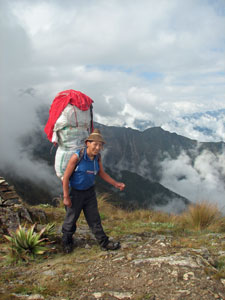 Valerio (aka superman) arrives at the pass |
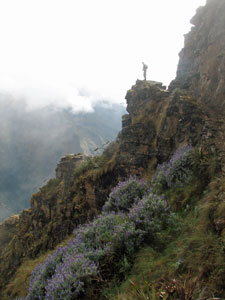 The mists swirl about San Juan Pass |
|
|||
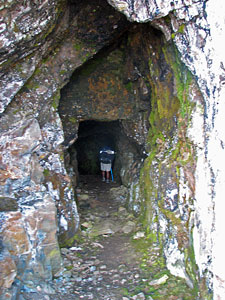 Felix exploring the old silver mine |
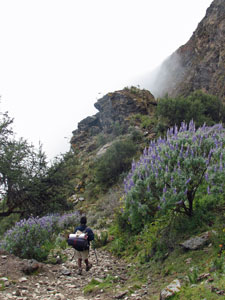 Descent of the eastern face of San Juan Pass |
 The luminescent blue of the tree lupins |
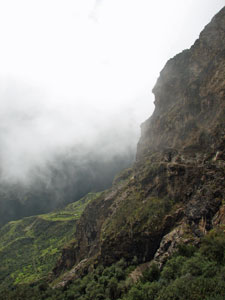 Cliff face above the grassy flats of Yanama |
|
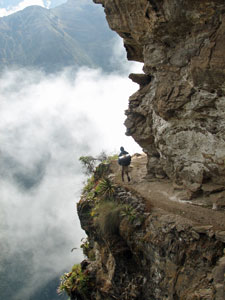 Track around the cliff face |
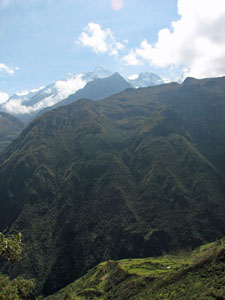 Looking down to the Yanama Valley |
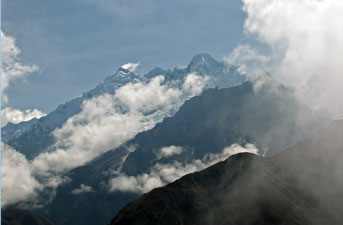 The mists finally clearing from Nevado Sacsarayoc |
|
||
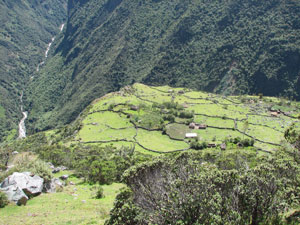 Mosaic of stone fences on the grassy plateau of Yanama |
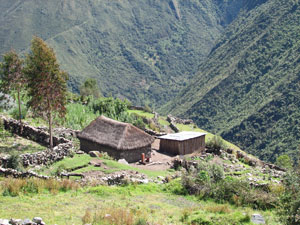 Farmhouse - Yanama village |
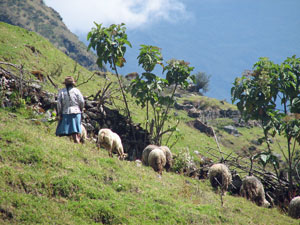 Old lady hearding her sheep |
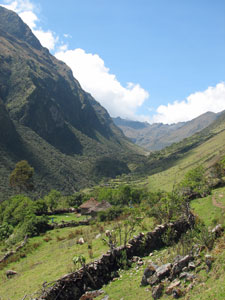 Looking up the Yanama Valley |
|
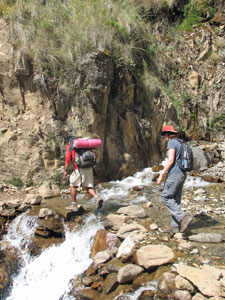 Crossing one of many glacier-fed sidestreams |
|
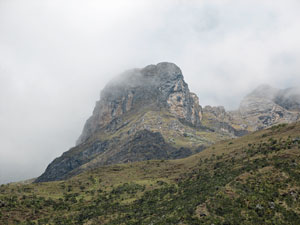 Rocky outcrop above the village |
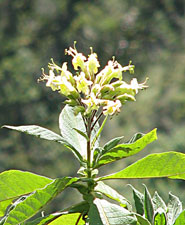 |
||
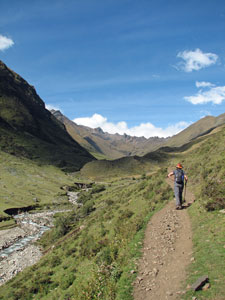 Heading into the higher Yanama Valley |
We wound our way alongside the silvery meandering stream of the fast-flowing Yanama River, fed by torrents and cascades that rushed down from glaciers high up in the mountains on either side. From below we could but glimpse their edges, shining in the afternoon sun. Patches of mauve flowering grey leaved tree lupins added a splash of colour to the grassy slopes. Yellow butterflies flitted across the path, occasionally forming small clusters to drink from pools on the track. |
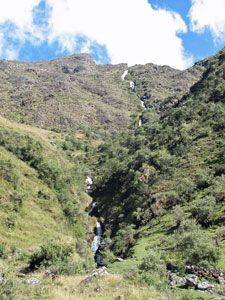 Silver thread of a glacier-fed cascade |
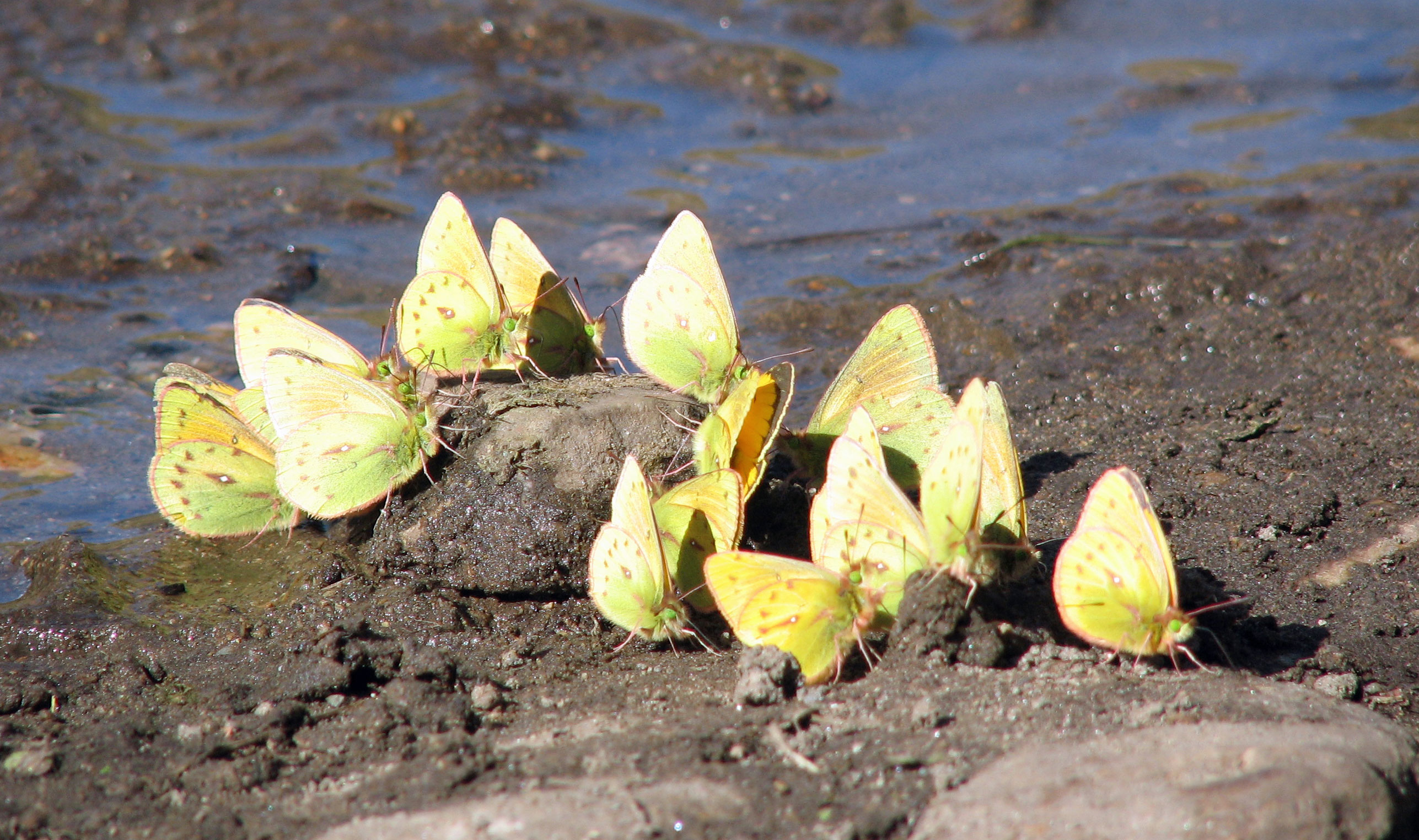 |
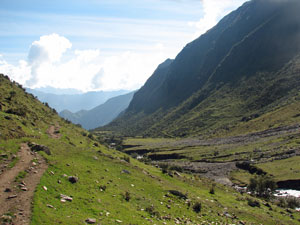 Track along the grassy verge of the Yanama Valley |
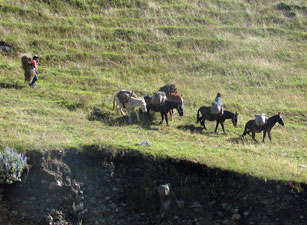 Bringing home the potatoes |
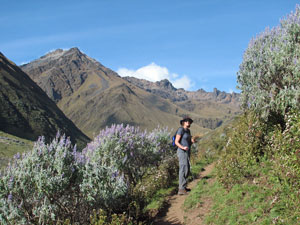 Nello amongst the lupins |
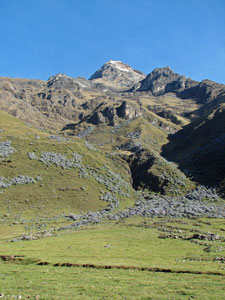 Green and mauve-spotted hillside at our campsite at Tacayo |
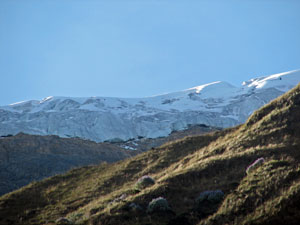 The edge of a glacier high above our campsite |
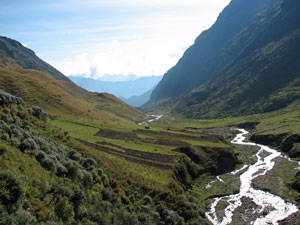 Looking down the course of the Yanama River |
|
||
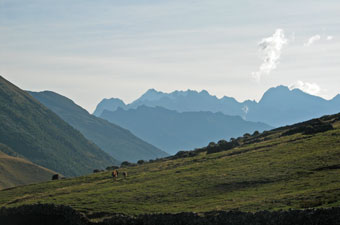 Late afternoon silhouettes of the mountains of Nevado Choquetekarpo |
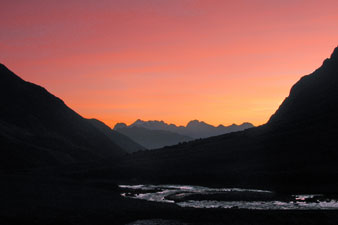 Yanama Valley sunset |
|
|
Day 6 - Tayaco to Colpapampa (18km - 700m ascent - 1900m descent) |
||
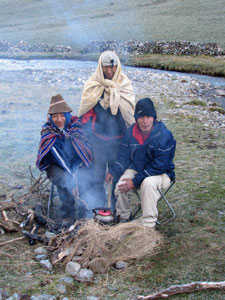 Frosty morning at 3960m |
It had been a sub-zero night - ice was still on the tents when we ate our breakfast at 7am, wishing that the sunlight would advance a little faster across the pampa. Eventually it burst out above the apex of the mountain behind us. How it lifted the spirits; enough to make the sight of the distant Yanama Pass a little less daunting. |
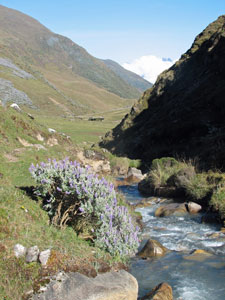 Small gorge connecting two valleys at Tayaco |
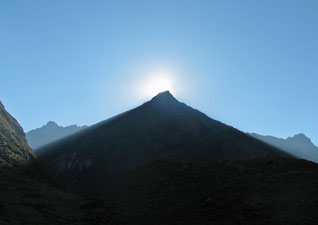 The sun about to burst forth above the mountain apex |
||
|
||||
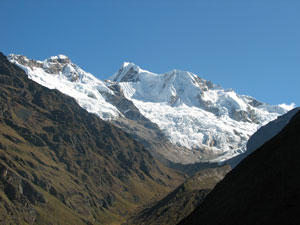 First view of Nevado Pumacillo |
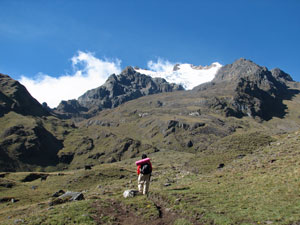 The road up to Yamana Pass |
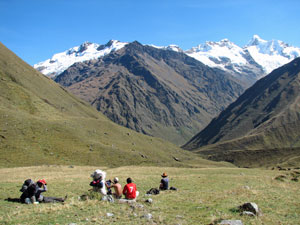 Enjoying the views in the autumn sun |
||
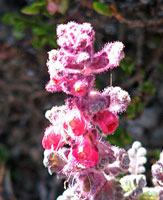 |
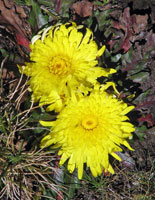 |
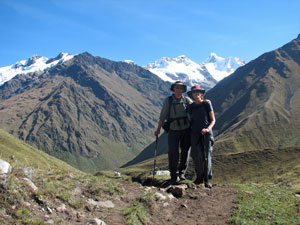 A rare photo that I didn't take |
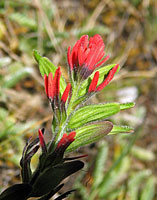 |
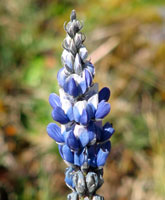 |
|
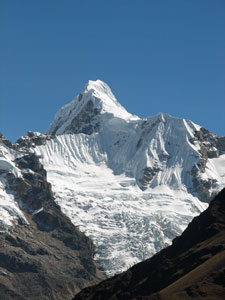 Magnificent profile of Pumacillo |
|
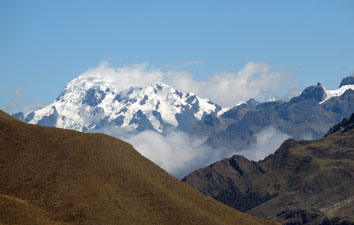 The distant Nevados Choquetekarpo |
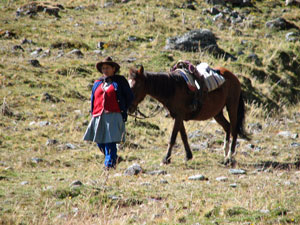 Campesino descendingfrom the pass |
|
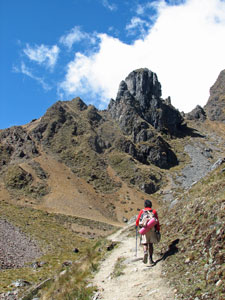 The jagged profile of Yamana Pass |
|
|
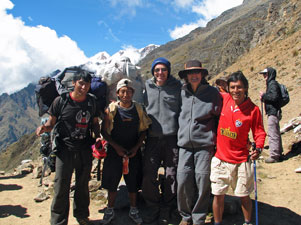 The Choquequirao- Machu Picchu trekking team on Yanama Pass |
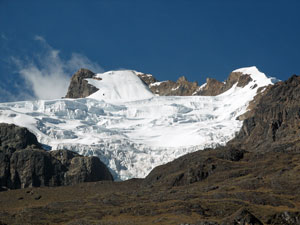 Glacier above the southern end of Yanama Pass |
|
|
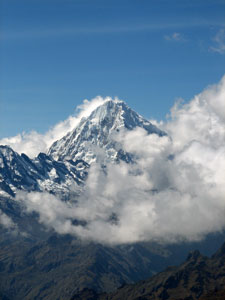 Cloud swirling about 6260m Salkantay |
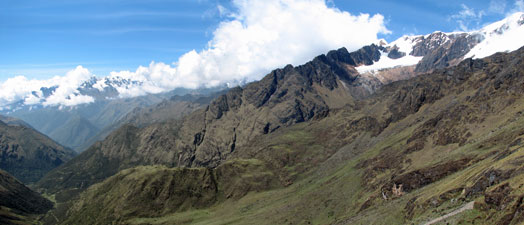 View from Yanama Pass over the Upper Totara Valley and mountains |
|
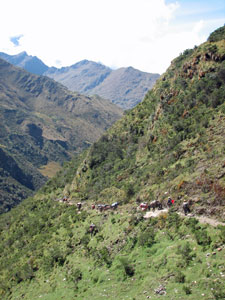 Mule train heading toward Totara |
|
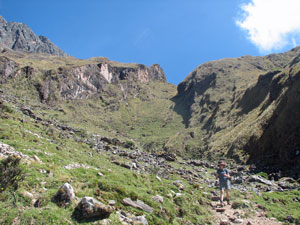 Descent into the Totara Valley from Yanama Pass |
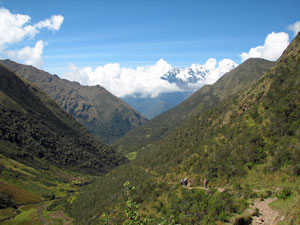 The upper Totara Valley |
|
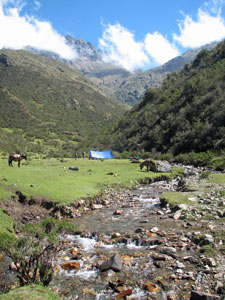 Grassy flats and babbling brook |
|
||
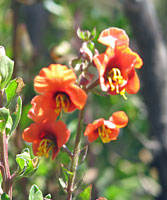 |
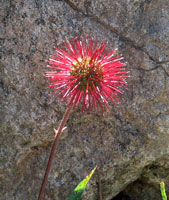 |
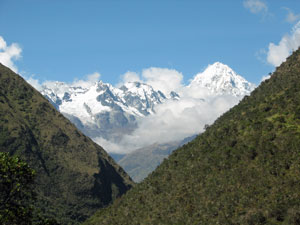 Classic "V-shaped valley with snowy peak" photo |
|
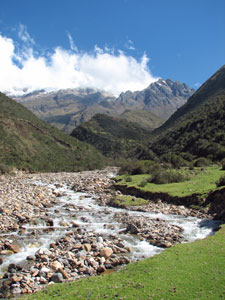 Boulder-strewn bed of the Totara River |
|
||
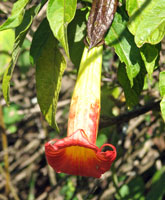 |
 |
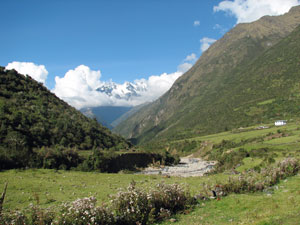 Broad valley near Totara village |
|
|
|||
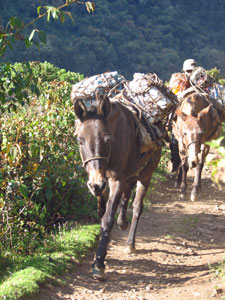 Mule train - lifeline of the mountain villages |
 The deep and winding course of the Totara |
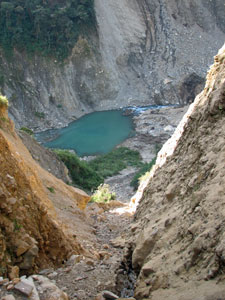 Massive landslip blocking the Totara River |
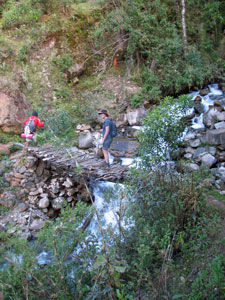 Crossing one of the many sidestreams |
 Bamboo and semi-tropical forest |
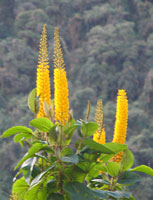 |
 |
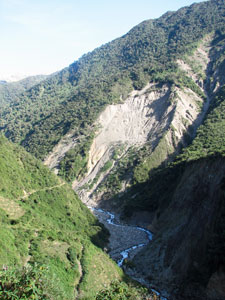 Massive landslip on the lower Totara River |
|
|||
|